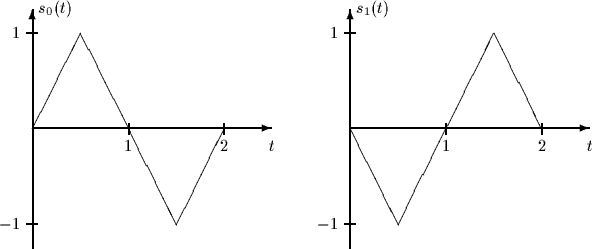


Next: Pulse Position Modulation
Up: Collected Problems
Previous: Vertices of a Hyper-cube
The following signal set is employed to
transmit equally likely signals over an additive
white Gaussian noise channel with spectral height  .
.
- 1.
- Sketch and accurately label the block diagram of the receiver which
minimizes the probability of error.
- 2.
- Compute the probability of error of your receiver from part (a).
- 3.
- Consider now the following receiver:
Compute the probability of error of this receiver if g(t) is given by

- 4.
- Determine the best signal set, s0(t) and s1(t), such that the receiver in
part (c) is optimum and the average signal energy is equal to E=2.
- 5.
- Compute the probability of error achieved by the receiver in part (c) and
your signal set from part (d).
Prof. Bernd-Peter Paris
3/3/1998



![]()